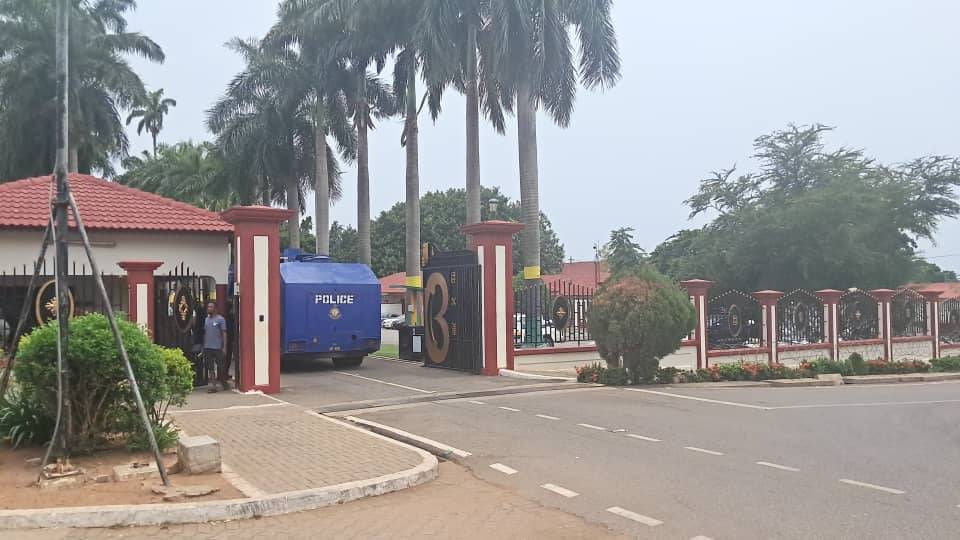There was a strong security presence at the Manhyia Palace in Kumasi on Tuesday, April 29, 2025, as the Asantehene, Otumfuo Osei Tutu II, began a crucial mediation process aimed at resolving the long-standing Bawku conflict. The meeting drew attention from across the country due to the gravity of the situation in Bawku and the importance of the Asantehene’s role in fostering national unity.
With tensions in Bawku continuing to rise, particularly due to an unresolved chieftaincy dispute that has persisted for decades, this peace initiative has been welcomed by many as a timely and potentially transformative intervention. The heavy police and military deployment around the palace underscores the significance attached to this meeting. Dignitaries, traditional leaders, and key stakeholders in the conflict gathered under the watchful eye of security forces to deliberate on a roadmap to peace.
The Asantehene’s involvement in this mediation is being seen not only as a gesture of leadership but also as an expression of national commitment to ending recurring violence in the Upper East town. His reputation for wisdom and neutrality adds considerable weight to the dialogue efforts. For many observers, the fact that Otumfuo Osei Tutu II has decided to personally lead the discussions speaks volumes about the urgency of the matter.
Speaking to Citi News, Sarfo Kantanka, a respected historian based at the Manhyia Palace, emphasised the sensitivity of the process and the necessity for top-level security arrangements. According to him, mediation in any deeply rooted conflict, especially one as longstanding as the Bawku situation, demands extra caution. He explained that this round of talks would adopt a mixed format—some sessions would be private, while others would be open to ensure transparency and inclusivity.
The Bawku conflict, which has its roots in competing claims to traditional leadership, has for years hindered development and stability in the area. The impact of the conflict has been far-reaching, affecting lives, livelihoods, and the delivery of essential services. Attempts to resolve it have often stalled, either due to a lack of political will or deep-seated mistrust between the factions involved.
This latest initiative led by the Asantehene has revived public interest and hope, especially among communities affected by the conflict. Many believe that if any leader can broker a deal that both parties can accept, it would be Otumfuo Osei Tutu II. His long-standing influence in Ghanaian chieftaincy matters and his track record of diplomacy provide a strong basis for optimism.
The palace grounds, usually serene, turned into a fortress of calm vigilance, with uniformed officers stationed at key points and patrol teams moving discreetly. Despite the heavy security, the atmosphere remained peaceful, with everyone seemingly united by a shared desire to end the bloodshed and usher in a new era of harmony.
As the dialogue process unfolds, there is hope that the silent majority in Bawku—those who have endured the effects of conflict without being directly involved—will finally get the peace they deserve. The presence of the Asantehene as a neutral and unifying figure has already changed the tone of the conversation. Observers are closely watching the developments, as the outcome of this mediation could serve as a blueprint for resolving similar disputes across the country.
The symbolic location of the talks at the Manhyia Palace, a centre of historical and cultural significance in Ghana, only adds to the weight of this process. Many believe this could mark the beginning of a genuine resolution, grounded in tradition, mutual respect, and a shared commitment to peace.


